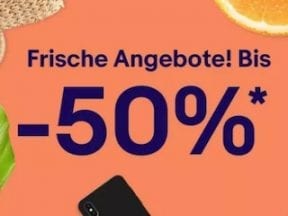In China, a drab gray Mao suit was once the required attire for men and women. No longer. The country is poised to become the largest luxury apparel market worldwide by 2025. With a 2020 population of 1.4 billion and a flourishing middle class with an appetite for foreign luxury goods, China is dominating ecommerce.
The Luxury Boom
Despite the pandemic, the Chinese luxury market increased by 48 percent in 2020 to roughly $52 billion, according to management consulting firm Bain & Company in its annual China luxury report, prepared in partnership with Alibaba’s Tmall Luxury Division.
Spending on luxury items continues to lag in the United States and Europe due to the pandemic, but it has recovered in China. A decrease in international travel by wealthy Chinese nationals has increased online luxury goods purchases. The pandemic also affected “daigou” agents, professional shoppers who travel overseas to buy popular cosmetics and luxury goods and then resell them in China. The country’s luxury online penetration increased from about 13 percent in 2019 to 23 percent in 2020, according to the Bain report.
China has operated a duty-free shop on the island of Hainan for a decade. But business took off in 2020, driven by Covid-19 travel restrictions and attractive shopping policy changes, such as a 300-percent increase in the annual duty-free quota per person. As a result, Hainan’s duty-free sales surged 98 percent in the first 10 months of 2020.
Hainan now accounts for 55 percent of duty-free sales in China. If they do not exhaust their annual duty-free credits, visitors to Hainan can make additional purchases online and receive the items via home delivery.
Ecommerce in China
China is the world’s largest ecommerce market, propelled by ecommerce subsidiaries of the Alibaba Group — Taobao, Alibaba, and Tmall — plus competitors JD.com and Pinduoduo. Research firm eMarketer estimates that all Alibaba marketplaces plus JD.com and Pinduoduo will take a hefty 83.6 percent of the retail ecommerce market in 2020.
Statista reports that China has the largest online ecommerce population, with 710 million people shopping digitally. Seventy-six percent of digital shoppers are between the ages of 18 and 44. According to Statista, 64 percent of China-based internet users engage in ecommerce, with apparel and accessories and toys and hobby items the most popular products.
Statista estimates that consumers in China will spend $1.1 trillion online this year, up from $826.6 billion in 2019, which was more than double the United States’ second-place position of $360.0 billion and the E.U.’s $351.9 billion.
Cross-border
Since I last addressed its cross-border ecommerce market, China has cemented its standing as an online powerhouse in international purchases.
Although they have many domestic choices, Chinese consumers continue to be avid cross-border shoppers of both consumable and luxury goods. According to RetailX’s “China 2020 Ecommerce Country Report,” in 2019 China experienced 16.7 percent growth in cross-border ecommerce, typically via established and trusted domestic marketplaces such as Tmall. Foreign goods are seen as being of better quality by 68 percent of Chinese shoppers. Beauty and makeup account for the bulk of these purchases.
Social Selling
RetailX observes that Pinterest is the most popular social site in China, attracting 45 percent of social media users whereas Facebook garners only eight percent.
Chinese consumers enjoy shopping via live-streaming sales — which are especially popular on the annual Nov. 11 Singles Day — as well as instant messaging. Both drive online sales in the country. A fifth of shoppers buy directly from live videos. Many young people shop directly from instant messaging feeds, such as WeChat, which has resulted in these services driving the development of mobile payment systems embedded in the messaging applications. WeChat is now the world’s largest standalone mobile application.
Pandemic Effects
According to an Ipsos survey, 50 percent of Chinese online shoppers have increased the frequency and amount of online shopping due to Covid-19. By April 2020 the Chinese economy had started to recover, just as the rest of the world began to close down. With Europe and the United States in economic stagnation, China offers a vibrant ecommerce market.




